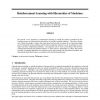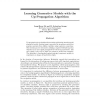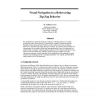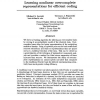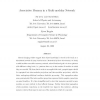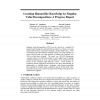NIPS
1997
14 years 24 days ago
1997
We present a new approach to reinforcement learning in which the policies considered by the learning process are constrained by hierarchies of partially specified machines. This ...
NIPS
1997
14 years 24 days ago
1997
Up-propagation is an algorithm for inverting and learning neural network generative models. Sensory input is processed by inverting a model that generates patterns from hidden var...
NIPS
1997
14 years 24 days ago
1997
A rich body of data exists showing that recollection of specific information makes an important contribution to recognition memory, which is distinct from the contribution of fam...
NIPS
1997
14 years 24 days ago
1997
Program execution speed on modern computers is sensitive, by a factor of two or more, to the order in which instructions are presented to the processor. To realize potential execu...
NIPS
1997
14 years 24 days ago
1997
Multiple-instance learning is a variation on supervised learning, where the task is to learn a concept given positive and negative bags of instances. Each bag may contain many ins...
NIPS
1997
14 years 24 days ago
1997
NIPS
1997
14 years 24 days ago
1997
NIPS
1997
14 years 24 days ago
1997
Recent imaging studies suggest that object knowledge is stored in the brain as a distributed network of many cortical areas. Motivated by these observations, we study a multi-modu...
NIPS
1997
14 years 24 days ago
1997
We have constructed an inexpensive, video-based, motorized tracking system that learns to track a head. It uses real time graphical user inputs or an auxiliary infrared detector a...
NIPS
1997
14 years 24 days ago
1997
Singular value decomposition (SVD) can be viewed as a method for unsupervised training of a network that associates two classes of events reciprocally by linear connections throug...
